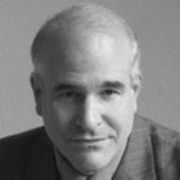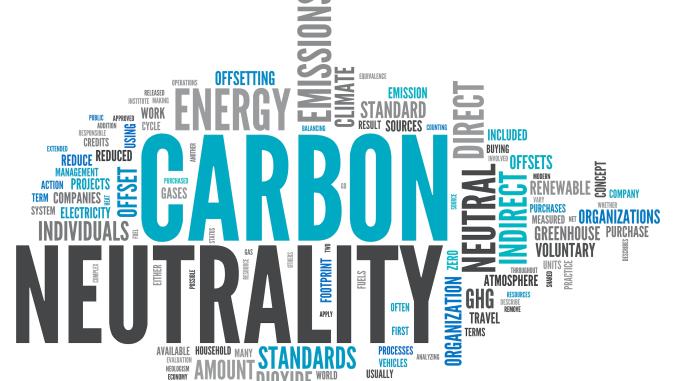How developing countries put forests on the climate agenda
Nearly a quarter of all the greenhouse gases emitted by man come from the way we manage our forests, farms and fields.

Birds eye view of tropical rainforest deforestation.
This is part three in a series about how forests and farms came to play roles in addressing climate change. Here are part one and part two. This story is also part of Covering Climate Now, a global collaboration of more than 250 news outlets to strengthen coverage of the climate story.
As a child of rubber tappers in the Brazilian Amazon, Chico Mendes saw how quickly the life-sustaining forest could disappear if soy farmers and cattle ranchers wanted the land for themselves. They didn’t harvest the trees for rubber or nuts, but chopped them down, burned them and scraped them away.
Cattle ranching and soy farming, he concluded, didn’t create wealth; they merely shifted it from hundreds of forest people to a dozen or so ranch hands, over and over again, until hundreds became millions and the forest was no more.
He also concluded that indigenous people and rubber tappers, who’d long competed for territory, were natural allies — defenders of the forest — and he began reaching across the bitter divide.
By the time Steve Schwartzman met him in 1985, Mendes had unified these once-bitter foes and begun expanding the alliance to include environmental NGOs such as the Environmental Defense Fund (EDF), who Schwartzman worked for.
Cattlemen assassinated Mendes in 1988, three days before Christmas, but his legacy lives on: in the extractive reserves developed in his name, in the expanded rights of forest people under renewed threat across Brazil, and even in the creation of financing mechanisms embedded in the Paris Climate Agreement — mechanisms that could provide billions of dollars for forest conservation in the coming years under the rubric REDD+ (Reducing Emissions from Deforestation and forest Degradation, plus the role of conservation, sustainable management of forests and enhancement of forest carbon stocks).
REDD+ uses carbon finance to protect endangered forests in the tropics, in part by supporting the forest people who long have been among the most effective stewards of the land. It exists today because a coalition of developing nations embraced the work of scientists such as Schwartzman and pushed for its inclusion in the United Nations Framework Convention on Climate Change (UNFCCC), the global treaty within which the Paris Agreement nests.In 1989, 24 heads of state recognized the reality of climate science, the need to create a global response to it and that developed countries had generated the bulk of industrial emissions.
Schwartzman, who now heads EDF’s work on both tropical forests in general and economic incentives for large-scale forest protection in particular, says Mendes inspired him to make this his life’s work.
"Conceptually, I remember him saying, in about 1987, that since the rubber tappers were protecting resources of global importance, there should be some way for them to be compensated," he says.
In this, the third installment of the series Forests, Farms, and the Global Carbon Sink, we revisit a critical moment in the evolution of global climate talks to see how that protection, which had been left out of the Kyoto Protocol, found its way back into global climate talks.
The rich/poor divide
Chico Mendes was assassinated just two weeks after the United Nations formally launched (PDF) the Intergovernmental Panel on Climate Change (IPCC) to provide a global compendium of known climate science. It was the start of a period during which the world seemed to be addressing greenhouse gasses the way it had ozone-depleting substances in 1987.
In 1989, 24 heads of state, meeting in The Hague, formally recognized the reality of climate science, the need to create a global response to it and that developed countries had generated the bulk of industrial emissions.
The resulting Hague Declaration on the Environment sought to build on the success of the 1987 Montreal Protocol, which eliminated the chlorofluorocarbons that were depleting the ozone layer. Referencing that success, it explicitly noted that "most of the deleterious emissions originate in industrialized nations."
When dealing with greenhouse gasses, they agreed, countries whose "level of development and actual responsibility for the deterioration of the atmosphere" are highest should help others bear the burden of slowing or reversing climate change.
As talks evolved, however, developed countries pushed back against what political scientist Joyeeta Gupta, in her 2015 book "The History of Global Climate Governance," calls the "liability paradigm" that implied major emitters "would in the future also be held liable for climate harm."
Instead, she says, they drifted towards a "leadership paradigm" that "framed developed countries as leaders rather than polluters. Leaders would show the way for carbon reform. They would not be obliged to compensate other countries, but instead could make resources voluntarily available to countries that were affected by climate change. Leaders would lead, the rest of the world would follow. There was no need for finger pointing or unpleasant liability discussions."
Within four years, negotiators had signed the United Nations Framework Convention on Climate Change (PDF) (UNFCCC) at the 1992 Earth Summit in Rio de Janeiro, recognizing the concept of "Common but Differentiated Responsibilities and Respective Capabilities" (CBDR–RC). In 1995, world leaders began convening annual Conferences of the Parties (COPs) to the UNFCCC. In 1997, at COP3 in Kyoto, Japan, they signed the Kyoto Protocol.The Kyoto Protocol expires at the end of next year and sets emission-reduction targets for developed (rich) countries but imposes no such restrictions on developing (poor) countries.
The Kyoto Protocol and the great divide
The Kyoto Protocol is an addendum to the UNFCCC. It expires at the end of next year and sets emission-reduction targets for developed (rich) countries but imposes no such restrictions on developing (poor) countries. The protocol’s Clean Development Mechanism (CDM) even said that companies in developed countries could, under some circumstances, "offset" part of their emissions at home by financing clean development projects in developing countries.
The European Union implemented a cap on total emissions from industries such as energy, metals and pulp and paper. The cap is still in place and covers 12,000 installations. Companies that can’t meet their targets are allowed to buy credits from those that can under a "cap-and-trade" system through the European Union Emissions Trading Scheme (EU-ETS). In some circumstances, credits generated through the CDM are permitted into the EU-ETS.
The United States also signed the Kyoto Protocol, but then-President Bill Clinton, facing Republican opposition, never submitted it to the Senate for ratification. His successor, George W. Bush, vowed never to endorse a treaty that "exempts 80 percent of the world, including major population centers such as China and India, from compliance, and would cause serious harm to the U.S. economy." That was the end of U.S. participation in Kyoto Protocol, and the beginning of the end of the "leadership paradigm."
Kyoto: a forest-free zone
The protocol lived on without the United States, but NGOs and governments were divided over whether to include projects such as Mi Bosque (see Forests, Farms, and the Global Carbon Sink: The Genesis) in the CDM. Opponents objected on several grounds — some derided the idea of "putting a price on nature," which they found morally repugnant, while others focused more on nitty-gritty issues: How can you be sure the money goes to activities that are actually saving the forest and not just rent-seeking (the "additionality" challenge)? How can you be sure that deforestation avoided in one place doesn’t just move down the street (leakage)? How can you be sure that forest saved and paid for one year doesn’t go up in smoke another year (permanence)?
European governments alternately argued that deforestation wasn’t a major source of greenhouse gasses and that low-priced credits generated by saving forest would flood the EU-ETS, driving prices down too low to really incentivize the kind of engineering adjustments needed to reduce industrial emissions. Brazil opposed inclusion for a similar reason.
As a result, when the Kyoto Protocol was finalized, it recognized offsets generated by planting trees, but not those such as Mi Bosque, which reduced emissions by saving endangered forest.
How can you be sure the money goes to activities that are actually saving the forest and not just rent-seeking (the 'additionality' challenge)?
Momentum for saving forests
NGOs such as EDF and The Nature Conservancy (TNC) continued to push for the inclusion of mechanisms that could save forests — and for more ways than one.
"We felt that including forests would not only reduce emissions, but also bring both developing countries and rural America into the mix," says Annie Petsonk of EDF.
Outside the UNFCCC, the concept was moving forward as green-minded entrepreneurs, global research organizations and major development banks experimented with different ways of using carbon finance to slow deforestation. Some focused on refining techniques for measuring the ways human action impacted the carbon content of a forest, while others drew on this to experiment with financing mechanisms that built on the model pioneered by Mi Bosque — mechanisms then generally referred to as "avoided deforestation."
The experiments yielded mixed results, but the World Bank, often criticized for funding development projects that destroy forests, had begun offering development loans that were contingent on reducing deforestation — including one to Papua New Guinea (PNG).
Papua New Guinea
PNG already had run afoul of U.S. and EU laws forbidding the import of illegally harvested timber; and in 2003, the World Bank offered to loan the country $17 million to clean up its act. The Prime Minister, Sir Michael Somare, liked the idea but not the amount — which came to less than half of what his country earned from logging every year. He turned to a young banker named Kevin Conrad.

Conrad, who held dual citizenship in PNG and the United States, had grown up in PNG but earned a finance degree at the University of Southern California. Somare had met him while Conrad was working in California, and he persuaded him to come back to PNG.
"He basically asked me to look into the carbon stuff," Conrad says. "I learned that the World Bank was the biggest holder of carbon credits at the time, so the first person I called was Ken Newcombe, who was running the World Bank’s carbon program at the time."
He says Newcombe offered him a brief history of the Kyoto Protocol and how forests had been excluded.
Conrad reported his findings to Somare, who asked him to keep digging and eventually appointed him to negotiate on PNG’s behalf in the UNFCCC — a job Conrad took while working towards a master’s at Columbia University on deforestation as a market failure.
The learning curve and the power of cooperation
Conrad began reaching out to key people in the carbon space, beginning with Peter Frumhoff of the Union of Concerned Scientists (UCS), Annie Petsonk of EDF and Ghanaian attorney Seth Osafo, acting as a senior advisor to the UNFCCC.
"Peter helped me understand the science, Seth helped me understand the legal issues and Annie helped me identify key people in developing countries who were interested in saving forests," Conrad says.
One thing everyone agreed on: The first order of business was to get avoided deforestation back on the UNFCCC agenda — specifically, to get it recognized as an official agenda item in a negotiating track called SBSTA, or the Subsidiary Body for Scientific and Technological Advice.
SBSTA is where sticky technical issues are worked out before going to the COP, and avoided deforestation was full of sticky technical issues. To get avoided deforestation onto the SBSTA agenda, Conrad was told, he’d need to have it introduced in plenary and then voted on. The earliest he could hope to do that was at COP11, slated for the end of November 2005 in Montreal.
Conrad finagled a meeting room on the 45th floor of JPMorgan’s New York headquarters and began inviting U.N. ambassadors from forest nations to lunch.
"I would basically say, ‘Guys, I’m just an accidental tourist in the space,’" he says. "I’d say, ‘I’m not a diplomat; I’m not an environmentalist; I’m not a climatologist; but coming from the outside, this doesn’t make sense to me, and it doesn’t make sense to our prime minister. Does it make sense to you? If not, what do we do about it?’"
Through Columbia, he was able to invite leading economists such as Jeffrey Sachs and Nobel Prize recipient Joseph Stiglitz to some meetings and to pick their brains himself.
"I quickly learned that, a lot of times, the ambassadors and the actual people who negotiate the UNFCCC don’t even know each other," he says. "So we had to get ambassadors going to UNFCCC meetings and meeting their own countrymen. It wasn’t a very easy process, but it was possible, and we made it happen."
Now formally registered as a negotiator, he represented PNG at SBSTA meetings and other scientific workshops throughout the year, both inside the UNFCCC process and outside it. In early 2005, Petsonk arranged a meeting that brought key people together for the first time.
"She had a network of developing countries where EDF was doing projects," he says. "She organized a little dinner, and … that was one of the very first times where ambassadors and the people who are actually negotiating were together in one place."
Carlos Manuel Rodriguez soon emerged as a key ally. As environment minister of Costa Rica, he’d overseen a dramatic reduction in deforestation — due, he says, to the backing of then-President Oscar Arias Sánchez.
The sinner and the saint
Over lunch, Conrad and Rodriguez found common ground.
"I said something to the effect of, ‘Papua New Guinea is sort of the sinner here, and you’re the saint,’" he says. "I said, 'We’re getting put on blacklists for deforestation, but you’ve turned it around. Everybody’s looking to you. Why don’t we work together?'"
And they did.
By May 2005, they had gotten six other countries interested in working to get forests into the Kyoto Protocol, and they formally created a negotiating block called the Coalition for Rainforest Nations (CfRN), with a secretariat headquartered at Columbia University.
By May 2005, they had gotten six other countries interested in working to get forests into the Kyoto Protocol.
Working out of the school library, Conrad was able to draw on the latest research around avoided deforestation — which everyone agreed needed a better name.
A group of leading American and Brazilian scientists, including Schwartzman, were circulating a paper called "Tropical Deforestation and the Kyoto Protocol," which used the term "compensated reduction" to emphasize the focus on reducing emissions and not just getting paid to sit on carbon stocks, while others had begun talking about "reducing emissions from deforestation."
The acronym and the submission
"I don’t remember who came up with it first, but we were sitting there going, ‘R-E-D… reducing emissions from deforestation… RED,’" Conrad says. “I think the movie ‘Code Red’ ['A Few Good Men'] had just come out with Jack Nicholson and Tom Cruise, and we were worried about the association."
He credits the late land-use expert Bernhard Schlamadinger (PDF) with making the name final.
"He wanted to do a forest workshop, and he wanted us to come and present, and he wanted to give it a catchy name, so he just said, ‘Well, what can we call this thing?’ I said, ‘Well, we’re sort of stuck with RED,’ and he’s like, ‘That’s great!’ and that was the first time we agreed to use that acronym in the context of a technical workshop."
As the year progressed, the CfRN’s own submission began coming into focus, and by summer they had agreed on a draft submission called "Reducing emissions from deforestation in developing countries: approaches to stimulate action." (PDF)
It was a stunning submission, in part because it offered a chance to bridge the divide between developed and developing countries. Specifically, in a section called "Developing-World Accountability for Emissions," it explicitly stated that "climate stability cannot be achieved while over three-quarters of the world’s nations develop without emissions reduction commitments."
But Conrad soon learned that some powerful countries were lining up to block it.
"Robert Aisi, who was our Ambassador to the United Nations, came to me and said, ‘Brazil says no way in hell. This isn’t going to happen. Will you talk to them?" he recalls.
Brazil wasn’t the only country lining up to block RED.
This story first appeared on:





